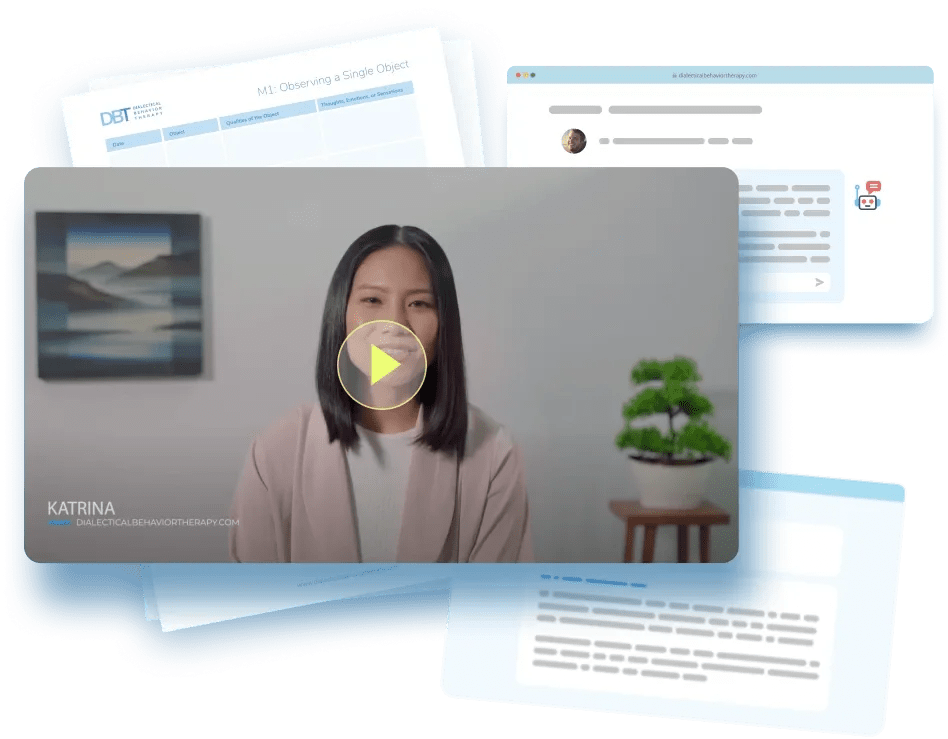PR6: Stress-Inoculation Imagery
Virtual Coach
Work step-by-step through the Problem-Solving, Coping & Relapse-Prevention exercise with the virtual coach.
Introduction
Coping skills work best when they’re practiced before stress hits full force. Techniques like the Thought-Stopping Band help interrupt spirals in the moment, while tools like Progressive Muscle Relaxation reduce baseline tension over time. But for high-pressure situations you can see coming, mental rehearsal can prepare both mind and body to respond more effectively.
Vaccines expose you to a weakened germ so your body’s ready for the real thing. Stress-Inoculation Imagery does the same for your mind: you mentally rehearse a coming challenge, feel the first waves of tension, and then deploy your coping tools until calm returns. Research on Meichenbaum’s three-phase model shows that athletes, surgical patients, and CBT clients who spend just a week on SII report lower cortisol spikes, steadier heart-rate, and fewer performance errors when the event arrives.
Instructions
Goal: Run a full SII drill for one upcoming stressor once a day for the 3 days leading up to the event.
Session time: 8–10 minutes.
Step 1: Select Stressor
Pick a single, specific event ≤ 7 days away.
Example: “Thursday 10 a.m. Zoom interview.”
Pro-tip: Fresh deadlines boost relevance and realism.
Step 2: List Coping Toolkit
Choose 2–3 skills to deploy (e.g., breath, STOPP card, Balanced Thought).
Example: 4-7-8 breathing; STOPP; mantra “I’ve prepared well.”
Pro-tip: Use tools you’ve already practiced in daily drills.
Step 3: Ground & Breathe (30 sec)
Sit still, close eyes, take three slow belly breaths.
Pro-tip: Lowers baseline arousal before visualizing.
Step 4: Visualize Scene in Real Time (2 min)
Picture the scenario from entry to first stress spike. Add sights, sounds, posture.
Example: See the waiting room, feel the shirt collar.
Pro-tip: Use first-person perspective only.
Step 5: Feel the Stress Rise (30 sec)
Let yourself feel anxiety build to ~ 6 / 10; notice body cues.
Example: Hands damp, jaw tight.
Pro-tip: Don’t jump to coping yet. Feel it first.
Step 6: Deploy Coping Tools (2–3 min)
Mentally insert each skill at the moment it’s needed.
Example: One STOPP cycle → breath 4-7-8 → mantra.
Pro-tip: Imagine the skill *working* (e.g., pulse slows).
Step 7: Play Successful Outcome (1 min)
Visualize a realistic “good-enough” ending.
Example: You answer calmly and thank the panel.
Pro-tip: Avoid perfection fantasies; aim for steady, not flawless.
Step 8: Rate Confidence & Distress
0–100 % confidence; 0–100 SUDS (Subjective Units of Distress).
Example: Confidence 65 → 80; SUDS 55 → 30.
Pro-tip: ≥ 15 % confidence bump = solid drill.
Step 9: Note Tweaks
If confidence < 70 %, refine your script or skills before the next run.
Example: Add power-pose before Zoom call.
Pro-tip: Iterate daily for max results.
FAQs
What if imagery makes my anxiety worse?
Pair with Diaphragmatic Breathing (PR3) beforehand. If SUDS stays > 70 after two rehearsals, work with a therapist to chunk the scene into smaller segments.
Do I rehearse perfect success?
Aim 80% smooth, 20 % hiccup (stumble on one answer, then recover). The brain learns more from coping-and-repair than from flawless fantasy.
Can I use background music?
Only if the real event includes it. Match sensory details for maximum transfer.
How many stressors can I inoculate at once?
One active script at a time. After the event passes, start a new SII cycle for the next challenge.
Disclaimer
If you have any behavioral health questions or concerns, please talk to your healthcare or mental health care provider. This article is supported by peer-reviewed research and information drawn from behavioral health societies and governmental agencies. However, it is not a substitute for professional behavioral health advice, diagnosis, or treatment.

